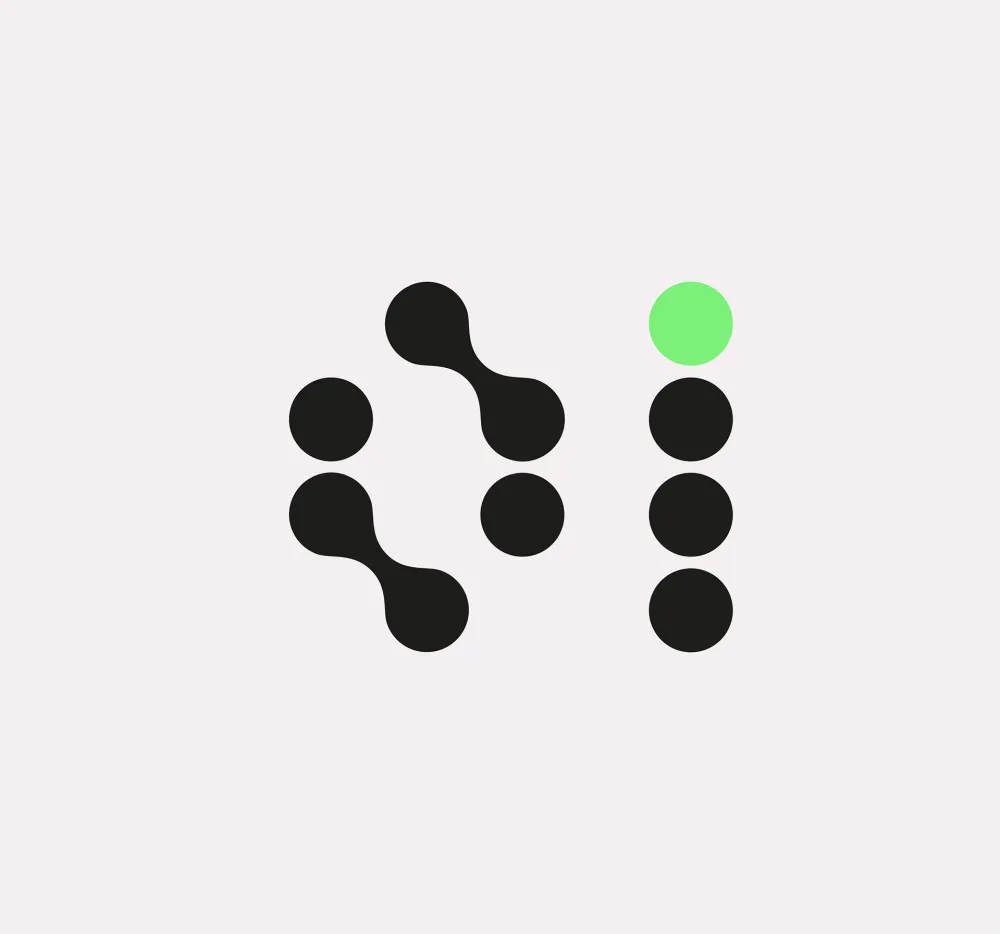
Tips for Staying Inspired: How Quantum Computing Pros Fuel Creativity and Innovation
Quantum computing is often heralded as the next frontier in computational power—promising unprecedented speed-ups for complex tasks, from cryptography and drug discovery to optimisation and materials science. Yet, despite the awe surrounding this field, pioneering breakthroughs come with their share of daily challenges: grappling with qubit stability, designing algorithms for hardware that’s still maturing, and navigating a fragmented ecosystem of quantum languages and simulators. It’s no surprise that even the most passionate quantum computing professionals can feel stuck or overwhelmed at times.
So how do researchers, engineers, developers, and theorists continue to push the boundaries of quantum computing amidst these obstacles? Below, we delve into ten practical strategies that can help quantum computing experts remain creative, inspired, and ready to tackle the quantum revolution head-on. Whether you’re exploring fault-tolerant qubit architectures, coding in Qiskit, or running experiments on real quantum hardware, these tips can guide you toward new ideas and sustained motivation.
1. Reconnect with the Monumental Potential of Quantum Computing
Quantum computing offers the tantalising prospect of solving problems in minutes that would take classical supercomputers years—if they can solve them at all. In the midst of debugging error mitigation techniques or reading research on qubit decoherence, it’s easy to lose sight of the broader vision.
Reflect on Transformative Use CasesFrom simulating complex molecules for pharmaceuticals and advanced materials to revolutionising cryptography, quantum computers hold the key to leaps in efficiency and insight across many domains. Keeping these applications in mind reminds you that your day-to-day tasks form part of a larger, transformative quest.
Study Landmark AchievementsRemind yourself of quantum “firsts,” such as Shor’s algorithm proving exponential speed-ups for factoring or Google’s Sycamore chip achieving quantum supremacy-like demonstrations. These milestones prove that incremental research can lead to major paradigm shifts.
Envision Long-Term ImpactImagine the future implications of stable, fault-tolerant quantum devices that can crack complex encryption or design novel drugs in real time. Such a vision can reinvigorate routine tasks—like calibrating gates or refining circuit layouts—as vital steps toward that breakthrough.
Why This HelpsFocusing on the field’s transformational promise reframes day-to-day tasks as building blocks in quantum’s unfolding revolution. This mindset shift often nurtures creative thinking about hardware, algorithms, or software frameworks.
2. Embrace Interdisciplinary Collaboration
Quantum computing pulls together physics, computer science, electrical engineering, mathematics, and more. Tapping into this diversity fosters cross-pollination of ideas that can spark fresh approaches and push the field forward.
Partner with Domain ExpertsIf you’re a physicist exploring new qubit types, collaborating with mathematicians could reveal advanced error-correction codes or novel cryptographic schemes. Similarly, a computer scientist might gain insights from chemists about specific simulation needs.
Work Alongside Traditional Computing ProsQuantum machines often integrate with classical architectures for control, data extraction, and hybrid processing. Consulting DevOps or HPC (high-performance computing) specialists can streamline these hybrid workflows and inspire new approaches to system design.
Seek Industry UsersQuantum solutions will ultimately serve real-world verticals—finance, pharma, logistics, etc. Interacting with domain specialists clarifies the bottlenecks they face and aligns your quantum R&D with pressing commercial or societal challenges.
Create Interdisciplinary MeetupsHosting small internal workshops or local user group events that mix quantum enthusiasts with experts from machine learning, cryptography, or HPC fosters an open environment where cross-domain knowledge can thrive.
Why This HelpsInterdisciplinary synergy broadens your toolkit, often spurring novel qubit designs, quantum-classical integration strategies, or algorithmic innovations. Working outside your comfort zone can reveal entirely new research directions.
3. Pursue Side Projects for Unconstrained Experimentation
Formal quantum computing R&D often operates within strict timelines and stakeholder expectations, whether in a lab or corporate setting. Meanwhile, side projects can allow more playful exploration—be it investigating niche algorithms or building quantum circuits purely for fun.
Tinker with Quantum SDKsIf your official work revolves around superconducting qubits, maybe you’d like to experiment with trapped-ion simulators or try new libraries (like PennyLane, Cirq, or Braket). Such dabbling often illuminates underexplored solutions or coding practices.
Experiment with Quantum SimulationsTesting an emerging quantum algorithm on classical simulators at home gives you a safe space to tweak parameters, add noise models, or combine it with classical approaches. You can try radical changes without worrying about official project constraints.
Keep a Log of DiscoveriesEven if a side project doesn’t directly feed into your main job, the insights you gain—like a novel approach to gate sequencing or a creative data encoding scheme—may prove valuable down the line.
Stay True to CuriosityThe real strength of side projects is the absence of strict deliverables. If you uncover something intriguing—like a quantum approach to a small puzzle or a brand-new coding style—feel free to pivot. That freedom fosters genuine creativity.
Why This HelpsSide projects rekindle curiosity and let you test out-of-the-box techniques in a low-pressure setting. The unbounded nature of personal exploration can yield unexpected breakthroughs that eventually refine or revolutionise your main quantum work.
4. Participate in Quantum Hackathons and Competitions
From Google’s Quantum AI to IBM’s Quantum Challenges, hackathons and competitions have become a vibrant arena for quantum enthusiasts to prototype ideas rapidly and share knowledge with global peers.
Choose Events Matching Your InterestsSome competitions focus on near-term quantum algorithms for chemistry, while others emphasise quantum programming challenges. Picking a theme you care about keeps you motivated and engaged.
Team Up with Varied RolesGet a mix of quantum hardware specialists, software developers, ML experts, and domain-specific scientists in one team. This synergy fosters complementary skill sets that can produce well-rounded solutions.
Aim for a PoC (Proof of Concept)With limited time, create a small quantum circuit that demonstrates viability or a software tool that automates circuit generation. This condensed approach fuels creative problem-solving under real-time pressure.
Study Winning SolutionsOnce the event ends, read the top teams’ code and write-ups. Observing how they optimised circuit depth or integrated classical pre-processing can spark insights into your own R&D pipelines.
Why This HelpsHackathons shorten feedback loops and encourage fearless experimentation in a communal setting. Even if you don’t place first, you’ll acquire coding tricks, hardware insights, or data processing ideas that refine your future quantum ventures.
5. Keep Pace with Frontier Research
Quantum computing is bursting with constant breakthroughs—from new qubit materials and error-correction codes to advanced quantum algorithms. Staying current ensures you’re continuously learning fresh perspectives and fosters “eureka!” moments.
Scan Research RepositoriesOnline platforms like arXiv (quant-ph section) regularly publish preprints on everything from topological qubits to quantum machine learning. Subscribe to weekly alerts or curated feeds focusing on your areas of interest.
Follow Key Labs and Thought LeadersOrganisations like the University of Oxford’s Quantum Group, MIT’s Engineering Quantum Systems, or private R&D labs post progress updates, blog posts, and open-source code on new quantum techniques. Setting up notifications can help you catch breaking results.
Attend Conferences and WorkshopsQ2B, APS March Meetings, or IQT conferences often feature leading-edge demos, panel discussions, and poster sessions. Hearing how teams overcame qubit coherence hurdles or improved quantum volume can inspire new directions.
Host Reading GroupsInvite colleagues or local quantum enthusiasts to read and dissect a recent paper each month. Debating methodology, open questions, or potential real-world uses can yield collaborative mini-projects or refine your understanding.
Why This HelpsBy tracking frontier developments, you remain at the cutting edge, gleaning advanced strategies for noise reduction, qubit scaling, or algorithmic frameworks. This knowledge frequently nudges you into more imaginative territory.
6. Cultivate a Knowledge-Sharing Culture
Quantum research and engineering can become siloed—some focus strictly on hardware calibration, others on gate-level programming, still others on abstract quantum error-correction. By encouraging open knowledge exchange, you spark synergy among teams.
Internal WorkshopsRotate short talks where someone explains a new quantum simulator feature or a novel qubit coherence approach. These sessions seed cross-team discussions that might unify hardware and software solutions in unexpected ways.
Central Document RepositoriesKeep a well-organised wiki detailing experimental protocols, best practices for quantum circuit design, or measurement methods. Having a single source of truth fosters consistent improvement across the organisation.
Peer Reviews and MentoringLet quantum hardware pros critique software frameworks and vice versa. Reviewing code or design documents from a different vantage point can unearth missed assumptions or possible optimisations.
Biweekly Brainstorm SessionsEncourage brainstorming over coffee or casual lunches—away from formal meeting structures. Teams can share incremental findings, puzzle over anomalies, or propose new micro-experiments. These relaxed discussions often spark leaps in collective creativity.
Why This HelpsWhen knowledge flows unrestricted, collaboration flourishes. The synergy of hardware insights, software solutions, and theoretical knowledge fosters robust, imaginative approaches to quantum computing’s biggest challenges.
7. Embrace Failures and Unexpected Results
Quantum computing research is rife with experimental complexities—qubits can decohere without warning, gate fidelities might suddenly drop, or a new code could drastically underperform. But each misstep can unlock insights if you treat it as a learning opportunity.
Conduct Post-Mortem AnalysesGather your team to dissect an experimental meltdown—like temperature fluctuations that degraded your superconducting qubits. Pinpoint root causes and discuss possible hardware upgrades, new materials, or protocol changes that might solve the issue.
Log Negative DataRecord gate fidelity data or circuit runs that failed, along with potential reasons (e.g., environment noise, instrument calibration drifts). Patterns in these logs can hint at bigger design flaws or solutions.
Revisit Underlying AssumptionsIf your quantum ML model isn’t outperforming classical methods, question your data encoding or circuit depth assumptions. Maybe you’re misaligned with the hardware’s real capabilities—leading to creative ways to reduce circuit layers or re-encode data.
Stay FlexibleA concept that fails to achieve quantum speedup now might gain traction if hardware improves or if you adapt the approach to a different qubit technology. Being open to pivoting fosters a climate of continuous innovation.
Why This HelpsFailures force deeper understanding. By systematically analysing what went wrong, you refine your methodology, discover hidden constraints, and often stumble upon fresh angles that lead to the next major breakthrough.
8. Hone Non-Technical Skills
Quantum computing might be a deeply technical domain, but soft skills—like communication, collaboration, and project management—can substantially amplify your creative reach and catalyse bigger impact for your work.
Refine Your PitchQuantum phenomena can be abstract for stakeholders or potential collaborators. Mastering a succinct explanation of your project’s value—whether addressing CFOs, partners, or conference attendees—often reveals new problem framings or potential use cases.
Improve Cross-Functional CommunicationIf you’re an engineer liaising with corporate executives or application domain leads (e.g., finance, pharma), tailoring your language to their expertise fosters stronger buy-in and sharper feedback. Clear articulation invites them to share domain challenges you can address.
Adopt Agile PracticesQuantum R&D can benefit from iterative development cycles, short sprints, and backlog prioritisation—mirroring software best practices. Regular check-ins ensure you detect misalignments early, leaving room for creative pivots.
Build Emotional IntelligenceCultivating trust, empathy, and understanding within your team fosters an environment where people freely share unusual ideas or risk-taking solutions. That collaborative atmosphere is essential for continuous innovation in quantum computing.
Why This HelpsNon-technical competencies bridge gaps between pure research and real-world application. Effective communication and collaboration accelerate idea exchange, unlocking fresh solutions that even the most advanced technical prowess alone might miss.
9. Seek or Become a Mentor in Quantum Computing
Mentorship, whether you’re an established quantum researcher or a newcomer to the field, expands your viewpoint. Engaging in structured mentor-mentee relationships brings new ideas and challenges your assumptions about quantum technologies.
Find a Mentor for Frontier TopicsIf you’re exploring topological qubits, looking into quantum networking, or diving into quantum error correction, find mentors who’ve already delved into these specialised niches. They can guide you around common pitfalls and advanced resources.
Offer Guidance to NovicesTeaching quantum basics—like quantum gates, superposition, or entanglement—to interns or new hires can reinforce your own grasp of the fundamentals. Their naive questions might prompt you to re-evaluate standard approaches in new ways.
Join Formal SchemesGroups like the Quantum Economic Development Consortium (QED-C) or academic institutions host mentorship programs that match experienced pros with emerging talent. This structure ensures scheduled milestones and actionable feedback.
Set Specific GoalsAlign on clear objectives, whether it’s improving quantum programming skills, mastering lab instrumentation for qubit calibration, or understanding a cutting-edge quantum algorithm. Clarity fosters productive, inspiring mentorship sessions.
Why This HelpsMentorship fosters reciprocal learning. Mentors often rediscover fundamentals or glean fresh approaches from mentees, while mentees accelerate their own progress by leveraging a mentor’s experience. These interactions broaden horizons for everyone involved.
10. Anchor Your Work in Tangible Impact
Finally, quantum computing might still be in a nascent phase, but remember that its ultimate value lies in solving real problems—optimising supply chains, accelerating drug discovery, enhancing machine learning, or securing data against future threats.
Collaborate with End Users or IndustryEngaging with automotive, finance, or healthcare partners reveals their prime concerns—like combinatorial optimization, advanced simulations, or AI synergy. Aligning your quantum R&D to these specifics grounds it in reality, encouraging pragmatic yet creative solutions.
Measure and Celebrate MilestonesDid your quantum algorithm reduce circuit depth enough to run on a real 50-qubit device? Did your hardware prototype achieve higher coherence times than last quarter? Sharing these wins fuels your team’s motivation.
Tackle Societal-Scale ProblemsIf possible, direct your quantum solutions toward pressing challenges—like climate modelling, pandemic research, or global supply chain efficiency. Purpose-driven work often nurtures unwavering commitment and fosters creative leaps.
Evolve ContinuouslyAchieving one quantum milestone (like demonstrating a certain quantum volume) shouldn’t be the end. Keep iterating, testing new qubit types or refining your algorithms. This iterative momentum ensures sustained innovation.
Why This HelpsRooting your research and development in practical use cases heightens everyone’s sense of purpose. Watching quantum solutions edge closer to real-world deployment is a potent driver for creative thinking and unwavering determination.
Conclusion: Sustaining a Lifelong Passion in Quantum Computing
Quantum computing stands on the cutting edge of technology—offering immense promise yet fraught with challenging physics, complex engineering, and intricate software design. Maintaining innovation and creativity in such a domain requires deliberate effort:
Reconnect with Quantum’s Potential—Remember the transformational possibilities that keep you motivated.
Embrace Interdisciplinary Collaboration—Merge hardware expertise, software frameworks, and domain knowledge.
Launch Side Projects—Explore new toolkits or algorithmic angles outside rigid work constraints.
Join Hackathons and Competitions—Prototype swiftly under time pressure, absorbing diverse insights.
Stay Current with Research—Follow cutting-edge work on qubits, error correction, and quantum algorithms.
Cultivate a Knowledge-Sharing Culture—Foster open communication and cross-team synergy.
Learn from Failures—Turn missteps into catalysts for deeper understanding and refined designs.
Develop Non-Technical Skills—Enhance communication and team dynamics to boost overall innovation.
Seek or Become a Mentor—Accelerate growth through guided learning and reciprocal exploration.
Anchor Work in Tangible Impact—Link quantum developments to real-world objectives for lasting inspiration.
By weaving these strategies into your daily research, coding, or engineering routines, you foster a supportive, idea-rich environment. Quantum computing’s potential may still be unfolding, but with consistent creativity, collaboration, and a belief in the field’s transformative power, you’ll play a key role in shaping the future of computation. For job opportunities, community networking, and further resources on quantum breakthroughs, visit QuantumComputingJobs.co.uk. Keep forging ahead—you may be just one insight away from the next quantum leap.


